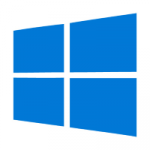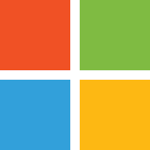 Another big update for Windows 10 is scheduled to start rolling out to all Windows 10 computers on May 8. Microsoft is calling this one the Windows 10 April 2018 Update.
Another big update for Windows 10 is scheduled to start rolling out to all Windows 10 computers on May 8. Microsoft is calling this one the Windows 10 April 2018 Update.
As with all Windows 10 updates, there’s no way to avoid it, and the only way to control when the update lands on your computer is to manually check for updates using Windows Update. Doing that any time after April 30 should show the April update and let you install it.
What’s new in the April 2018 update
Timeline is a new feature that allows you to see what you were doing on your computer on a specific date.
Nearby Sharing provides a new mechanism for quickly and easily sharing documents with nearby users. It uses Bluetooth and WiFi, depending on what’s available.
Focus Assist allows for easier control over Windows features that are potentially distracting, such as sounds, visual notifications and other alerts.
Improvements to Edge include several we’ve seen in other browsers for a while: tab audio muting, form autofill, clutter-free printing, full-screen reading mode, grammar tools, colour/theme improvements, and better compatibility with mobile platforms.
Windows Ink gets a few enhancements with this update, as do Windows Mixed Reality, Windows Hello, Microsoft Photos, Mixed Reality Viewer, Paint 3D, Cortana, Dictation, My People, and the Game Bar.
The once-discarded, then revived Start menu sees some improvement in the way pinning works.
HDR video support in Windows HD Color is expanded, as is support for the Touch Keyboard and Handwriting.
The April 2018 update also includes changes to:
- Windows accessibility features
- Windows Store
- Security
Update 2018May07: Microsoft continues to have quality issues with Windows 10 updates. The April 2018 Update was postponed earlier in April when a serious Blue Screen of Death (BSoD) problem was discovered. Now, Google Chrome users are reporting problems using the browser after installing the Windows 10 April 2018 update. Microsoft is working on a fix that should become available with other Patch Tuesday updates on May 8.
 The latest version of Chrome fixes four security bugs. The Chrome 66.0.3359.170 release notes and change log have additional details.
The latest version of Chrome fixes four security bugs. The Chrome 66.0.3359.170 release notes and change log have additional details. boot13
boot13 Mozilla is making things easier for IT folks with
Mozilla is making things easier for IT folks with  Spring has sprung, and with it, a load of updates from Microsoft and Adobe.
Spring has sprung, and with it, a load of updates from Microsoft and Adobe. As you might have guessed from Microsoft’s Flash updates, Adobe released a new version of Flash today. Flash 29.0.0.171 addresses a
As you might have guessed from Microsoft’s Flash updates, Adobe released a new version of Flash today. Flash 29.0.0.171 addresses a  Another big update for Windows 10 is scheduled to start rolling out to all Windows 10 computers on May 8. Microsoft is calling this one the
Another big update for Windows 10 is scheduled to start rolling out to all Windows 10 computers on May 8. Microsoft is calling this one the  Normally when Google cancels a service, it’s annoying and baffling, but we grumble and find an alternative.
Normally when Google cancels a service, it’s annoying and baffling, but we grumble and find an alternative.  The only major browser that still officially supports Java is Internet Explorer, although there are workarounds for some of the other browsers. For example, you can switch to
The only major browser that still officially supports Java is Internet Explorer, although there are workarounds for some of the other browsers. For example, you can switch to  Microsoft’s contribution to our monthly headache starts with a post on the TechNet MSRC blog:
Microsoft’s contribution to our monthly headache starts with a post on the TechNet MSRC blog: